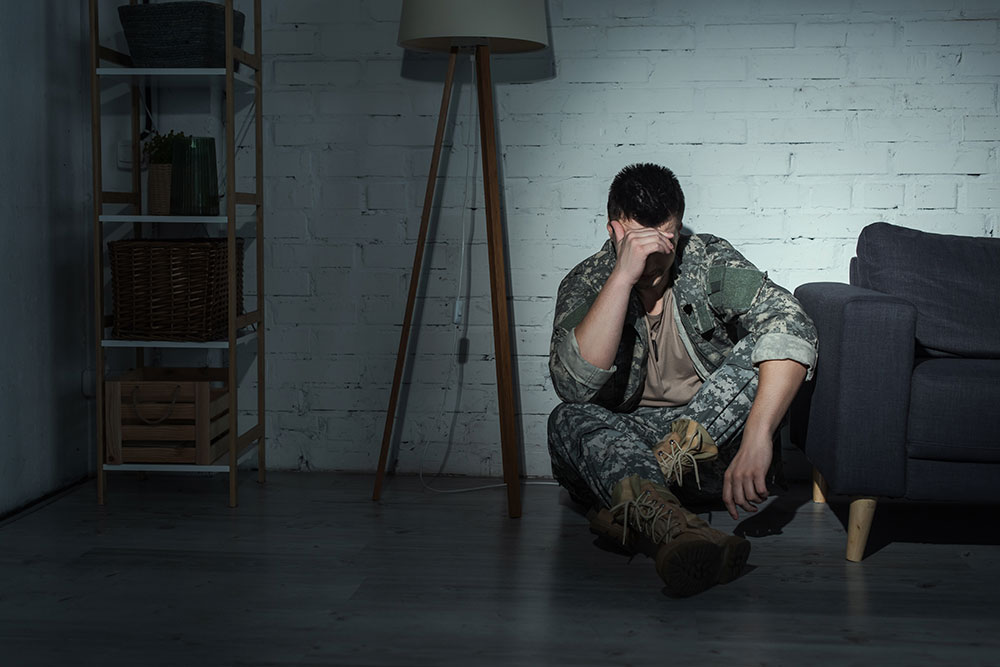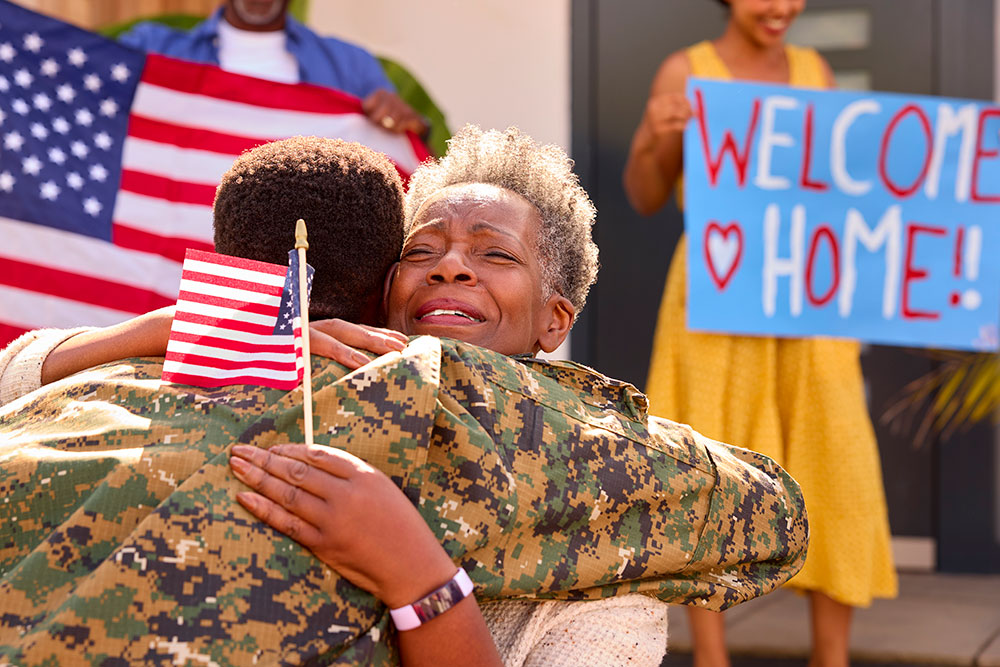From Combat to Comfort

Post-Traumatic Stress Disorder (PTSD) affects countless veterans who have faced the horrors of war and combat. For many, the battle doesn’t end on the battlefield; it continues at home, within their minds and emotions. Traditional treatments like medication and talk therapy have helped some, but others require different approaches to find true relief. In recent years, groundbreaking advancements in PTSD therapy have offered new hope. This article delves into the latest innovative treatments transforming PTSD care for veterans and shares stories of those who have found comfort through these methods.
The Challenge of PTSD in Veterans
PTSD can manifest in a variety of ways, including flashbacks, severe anxiety, nightmares, and uncontrollable thoughts about the traumatic event. For veterans, these symptoms can be debilitating, affecting their ability to work, maintain relationships, and lead fulfilling lives. Traditional treatments often involve a combination of medication and cognitive-behavioral therapy (CBT), but these are not always effective for everyone.
The complexity of PTSD requires a multifaceted approach, one that addresses the physical, emotional, and psychological aspects of the disorder. This has led to the development of several innovative therapies that show great promise in treating PTSD in veterans.

Eye Movement Desensitization and Reprocessing (EMDR)
One of the most talked-about advancements in PTSD treatment is Eye Movement Desensitization and Reprocessing (EMDR). Developed by Francine Shapiro in the late 1980s, EMDR has gained recognition for its effectiveness in reducing the distress associated with traumatic memories. The therapy involves recalling distressing events while simultaneously engaging in bilateral stimulation, such as side-to-side eye movements.
Success Stories
Many veterans have found significant relief through EMDR. Take, for example, John, a former Marine who served in Iraq. After struggling with PTSD for years, John turned to EMDR as a last resort. Through a series of sessions, he was able to process his traumatic memories in a way that reduced their emotional impact. John now advocates for EMDR, crediting it with giving him a new lease on life.
Virtual Reality Exposure Therapy (VRET)
Virtual Reality Exposure Therapy (VRET) is another cutting-edge treatment making waves in the field of PTSD therapy. This method uses virtual reality technology to create a controlled environment where veterans can confront and process their traumatic experiences. By immersing themselves in a virtual world that mirrors their traumatic experiences, veterans can work through their trauma in a safe and controlled setting.
Success Stories
Sarah, an Army veteran who served in Afghanistan, struggled with severe PTSD symptoms that traditional therapies couldn’t alleviate. Her therapist suggested VRET, and though skeptical at first, Sarah agreed to try it. Over several sessions, she found that being able to face her trauma in a virtual environment helped her gain control over her anxiety and fear. Today, Sarah is more at peace and has regained a sense of normalcy in her life.
Stellate Ganglion Block (SGB)
Stellate Ganglion Block (SGB) is a relatively new and highly promising treatment for PTSD. It involves an injection of a local anesthetic into a group of nerves in the neck, which can help reset the body’s “fight or flight” response. SGB has shown immediate and dramatic reductions in PTSD symptoms for many patients.
Success Stories
Michael, a Navy SEAL who served multiple tours in Afghanistan, experienced profound PTSD symptoms that left him feeling hopeless. After undergoing SGB treatment, Michael noticed an immediate reduction in his anxiety and hypervigilance. The treatment allowed him to engage more fully in therapy and rebuild his life.
Neurofeedback
Neurofeedback, also known as EEG biofeedback, is a technique that trains individuals to alter their brain activity. This method involves monitoring brain waves and providing real-time feedback, allowing veterans to learn how to control their brain function. Neurofeedback has shown promise in reducing PTSD symptoms by helping veterans develop healthier brain patterns.
Success Stories
David, an Air Force pilot, struggled with PTSD for years before discovering neurofeedback. Through consistent training, David learned to regulate his brain activity, which significantly reduced his PTSD symptoms. He now uses neurofeedback as a tool to maintain his mental health and continue his journey of recovery.
Service Dogs
While not a technological advancement, the use of service dogs for PTSD treatment has proven to be incredibly effective for many veterans. These specially trained dogs provide companionship, reduce anxiety, and help veterans navigate their daily lives. The bond between a veteran and their service dog can be life-changing.
Success Stories
Lisa, a former Army medic, found herself isolated and overwhelmed by PTSD. After being paired with a service dog named Max, Lisa’s life transformed. Max helps her manage anxiety attacks, provides constant companionship, and has helped Lisa reconnect with her community. The unconditional support from Max has been instrumental in Lisa’s healing journey.
Art and Music Therapy
Art and music therapy offer creative outlets for veterans to express and process their emotions. These therapies provide a non-verbal way to explore traumatic experiences and can be particularly beneficial for those who struggle to articulate their feelings.
Success Stories
Mark, a Marine Corps veteran, found traditional talk therapy challenging. He turned to art therapy and discovered that painting allowed him to express emotions he couldn’t put into words. Similarly, Jessica, an Army veteran, found solace in music therapy. Playing the guitar helped her process her trauma and find peace. Both Mark and Jessica continue to use these creative therapies as part of their ongoing recovery.

Looking Ahead: The Future of PTSD Treatment
The landscape of PTSD treatment is continually evolving, with researchers and clinicians exploring new methods to help veterans heal. From psychedelic-assisted therapy to advanced genetic research, the future holds even more possibilities for effective PTSD treatments.
Conclusion
The journey from combat to comfort is a challenging one for veterans with PTSD, but innovative therapies offer new hope and possibilities. Through treatments like EMDR, VRET, SGB, neurofeedback, service dogs, and creative therapies, veterans are finding relief and reclaiming their lives. The stories of John, Sarah, Michael, David, Lisa, Mark, and Jessica are testaments to the resilience of the human spirit and the transformative power of these groundbreaking therapies.
As we continue to advance our understanding of PTSD and develop new treatments, the goal remains the same: to provide veterans with the care and support they need to heal and thrive. By embracing innovation and compassion, we can help more veterans transition from combat to comfort, ensuring they receive the peace and quality of life they so richly deserve.
Please consider donating your Car, Truck, SUV, Van, RV, or Boat to one of our Charities.
NOTE: Our Blogs have been fact-checked; however, we cannot guarantee 100% accuracy. If you find any incorrect information, please let us know in the comments and we will remove or edit inaccurate content. Thank you!




